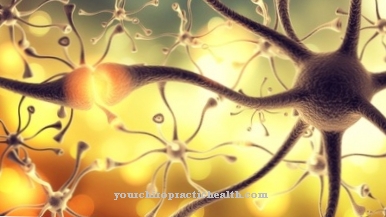As Cell cycle is a term used to describe a regularly occurring sequence of different phases in a body cell. The cell cycle always begins after the cell divides and ends when the next cell division is completed.
What is the cell cycle?

The cell cycle starts immediately after cell division with the interphase. The interphase is also known as the G phase. It is composed of the phases G1, G2, S and 0.
In the G1 phase, also known as the gap phase, the focus is on cell growth. The cell is expanded by various cell components, such as the cytoplasm and some cell organelles. Various proteins and the RNA, ribonucleic acid, are produced in the cell. The RNA plays a role in the cell as a carrier of genetic information.
In the G phase, the so-called centrioles divide. Centrioles are organelles of animal cells that are located near the cell nucleus. The nucleus is now clearly visible. In the G1 phase, each chromosome consists of only one chromatid. The G1 phase usually lasts 1 to 12 hours. This phase can be extremely shortened in degenerate cells.
The G1 phase is followed by the S phase. In this phase the replication of the DNA takes place in the cell nucleus, so that at the end of this synthesis phase the DNA is doubled and each chromosome is formed from two chromatids. The S phase lasts between 7 and 8 hours.
The G2 phase represents the transition to mitosis, the cell nucleus division. This phase is also known as the postsynthetic or premitotic interval. The cell contacts to neighboring cells are dissolved, the cell takes on a rounded shape and becomes larger due to an increased influx of fluid. In addition, more and more RNA molecules and proteins are being synthesized for cell division. This process takes about four hours.
The so-called M-phase-stimulating factor (MPF) then leads to a transition to the M-phase, the mitotic phase. In germ cells, the mitotic phase is also called meiosis. The actual cell division takes place in the M phase. The chromosomes divide just like the cell nucleus and the cell itself. The mitotic phase is itself divided into prophase, metaphase, anaphase and telophase.
Some cells go into the G0 phase after their division. No more cells are formed in the G0 phase. Nerve cells or epithelial cells are often in phase G0. Cells from the G0 phase can also be reactivated by special growth factors, so that the cell cycle starts again in these cells in the G1 phase.
Function & task
The periodic cell cycle enables the body to replace used and dead cells with new cells. The lifespan of human cells varies greatly. While nerve cells in the brain are never replaced, some body cells only live a few hours. Scientists estimate that around 50 million cells die every second. At the same time, the same number of cells are regenerated by the cell cycle and thus directly replace the lost cells. The body compensates for the loss of dying cells through the constant cell cycle.
The cell cycle also plays an important role in physical development. Cells can only grow to a certain size. So that people can get bigger, new cells have to be formed. The cell cycle is also necessary for the regeneration of damaged body parts or tissues. Cell division serves to replace cells damaged by injuries. For example, wounds can only close when new cells are formed. In the course of wound healing, the rate of cell division in the wound area therefore increases significantly.
Illnesses & ailments
From a pathological point of view, the cell cycle plays an important role in the development of cancer. In healthy people, the cell cycle is controlled by so-called cell cycle checkpoints. They serve to protect the DNA and the genome and should prevent cell degeneration. They also inhibit cell division in cells with DNA damage. The affected cells then have the option of either repairing the damage or, in the event of irreparable damage, initiating programmed cell death. Neoplastic cells, i.e. cancer cells, act autonomously and are no longer subject to these control mechanisms.
Two factors now contribute to uncontrolled cell growth. On the one hand, so-called proto-oncogenes mutate into oncogenes. These trigger excessive growth in the affected cell. In addition, the tumor suppressor genes mutate. In their normal state, these actually inhibit growth. After the mutation, however, their functions are disturbed and apoptosis, i.e. the programmed cell death of damaged cells, is no longer triggered. The cancer cells can thus multiply unhindered.
Disturbances in the phases of meiosis, i.e. the division of the germ cells, can lead to a maldistribution of the chromosomes. The number of chromosomes in the daughter cells is then pathologically changed. In this case one speaks of a chromosome aberration. The best known chromosome aberration is certainly Down's syndrome, also trisomy 21. Here chromosome 21 is present three times instead of twice. Instead of 46 chromosomes, there are 47 chromosomes. Features of trisomy 21 are upwardly extending lid axes, muscle hypotonia and a four-finger furrow. In most cases, the disease leads to intellectual disability. About half of all those affected also suffer from a heart defect.
Other chromosomal aberrations caused by a faulty cell cycle are Turner syndrome or Klinefelter syndrome. Here the sex chromosomes are affected. Chromosome aberrations are also often responsible for early miscarriages.









.jpg)



.jpg)



.jpg)







.jpg)


